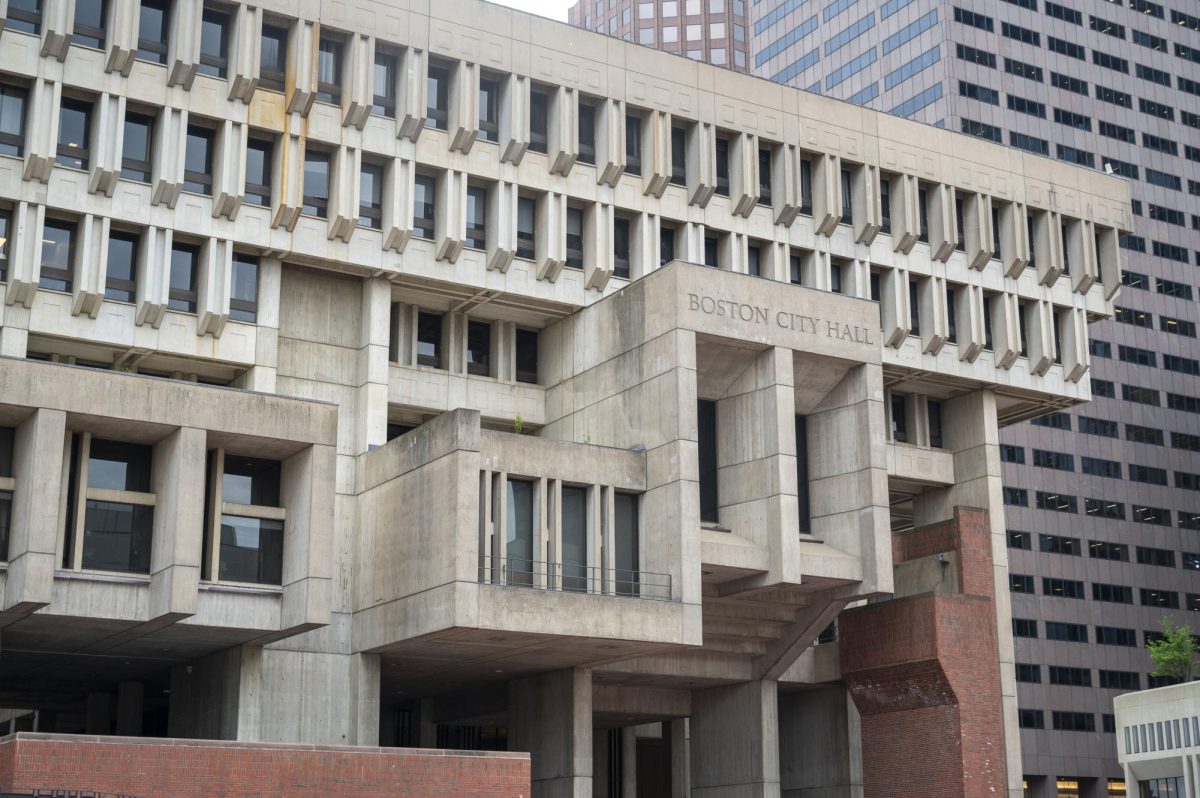Boston City Hall was designated as a historical landmark by Boston Mayor Michelle Wu Jan. 24, ensuring the iconic and infamous building’s preservation. The Boston Landmarks Commission voted on the building’s architectural, cultural and civic significance in early December 2024, which set the stage for the building to achieve landmark status.
The current City Hall, constructed in 1968, replaced the former City Hall, now known as “Old City Hall.” The original City Hall was built in 1865 and was characterized by its French architecture that symbolized the Victorian Era’s influence in North America. Nevertheless, “New City Hall” has been the heart of Boston’s government for the past 50 years. But, when comparing the two, many Boston residents find the current City Hall to be quite a shock.
“It doesn’t appear to fit the site. It seems large and disjointed in comparison [to the rest of the buildings],” said Krystyna Ostaszewski, a second-year architecture student at Northeastern. “It’s super industrial. … It just doesn’t look right. But it does seem fitting that it would be a landmark.”
Once named the second largest “eyesore” building in the United States, City Hall did not achieve landmark status without controversy. Nestled in the heart of Boston’s historical district, the building undeniably stands out. Often criticized for its brutalist architectural design, the monolithic concrete structure draws both stark criticism and adamant praise.
Much of the original discourse surrounding the building had to do with the cause for its construction; acquiring the land for the “New City Hall” required Boston’s burlesque district, Scully Square, to be demolished, removing a center for nightlife and other favorite local attractions.
“The city in the mid 20th century was suffering and was seen as very backward, and a city that businesses didn’t want to invest in,” said professor Daniel Abramson, director of architectural studies in the History of Art and Architecture Department at Boston University. “People around the country felt mired in corruption in the past, and so the political and business leaders and much of the community really wanted to demonstrate that Boston was not stuck in the past and that it was capable of moving forward.”
But the history, purpose and impact of the building goes far beyond its unfavorable beginning, as many residents simply do not like how the building looks. The bid to design Boston City Hall was one of the first modern architecture competitions in the United States to have dominion over designing a government building. Out of the 256 contest submissions, Kallman McKinnell & Knowles, a Boston based architectural firm, won with its hyper-modern brutalist design.
Brutalist architecture, which found its beginnings in Britain in the 1950s and ‘60s, is meant to demonstrate a more raw and honest feeling, foregoing nearly all materials beside concrete.
“Brutalism is a type of architecture that directly expresses its materials, technology and structure,” Abramson said. “It had a directness and an honesty to it, which was this, what the building was made out of, and so you weren’t putting extra ornamentation or covering it up.”
Boston has long been characterized by its traditional, Victorian-style brownstones and English architectural influence. As such, the building has often faced public scrutiny due to its brutalist architecture and stark contrast to other surrounding historical buildings.
“Do you want to live in a community that’s homogenous, where everything is the same, or are you comfortable with diversity?” Abramson said.
Many Bostonians ask themselves Abramson’s question in the wake of the landmark decision, which recognizes City Hall as a culturally, historically, and civically significant site to be preserved for many generations.
Jerry Leonard, a 90-year-old man who has volunteered at Boston City Hall for 10 years, seems to have answered this question for himself.
“I love the building. I think it’s fascinating. It’s one of the oldest cities in the country with one of the newest [government] buildings,” Leonard said.
Leonard walked from his post in the lobby of City Hall to a railing overlooking the brick-lined first-floor, and pointed to the concrete ceiling above.
“So here you’re looking at three different stories. We haven’t gone anywhere, and here we have the bricks. We have the concrete. We have the transition,” Leonard said.
But not everyone is as enthusiastic as Leonard is about City Hall or its new status as a historical landmark.
“So really, all the old buildings [in Boston] are fantastic buildings, and I think you’ve got a bit of a monstrosity here in the middle,” Nicholas Altmann, a tourist visiting from Liverpool, England said. “It looks like something from Star Wars. It looks like something Darth Vader wants to destroy.”
With such differing opinions, the public sentiment surrounding City Hall is a mixed bag. However, there does appear to be a general consensus that the building deserves its recent recognition.
“By every standard and criteria for how buildings get landmarked, it’s deserving,” Abramson said. “You may or may not like Boston City Hall aesthetically, but it meets the criteria for architectural, historical and community significance.”







![A demonstrator hoists a sign above their head that reads, "We [heart] our international students." Among the posters were some listing international scientists, while other protesters held American flags.](https://huntnewsnu.com/wp-content/uploads/2025/06/image12-1200x800.jpg)


